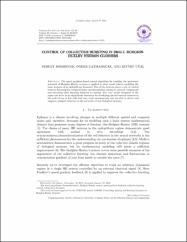Control of collective bursting in small Hodgkin-Haxley neuron clusters
Abstract
The speed gradient-based control algorithm for tracking the membrane potential of Hodgkin-Huxley neurons is applied to their small clusters modeling the basic features of an epileptiform dynamics. One of the neurons plays a role of control element detecting the temporal hyper-synchronization among its network companions and switching their bursting behavior to resting. The ‘toy’ model proposed in the paper can serve as an algorithmic basement for developing special control elements at the scale of one or few cells that may work autonomously and are able to detect and suppress epileptic behavior in the networks of real biological neurons.


















